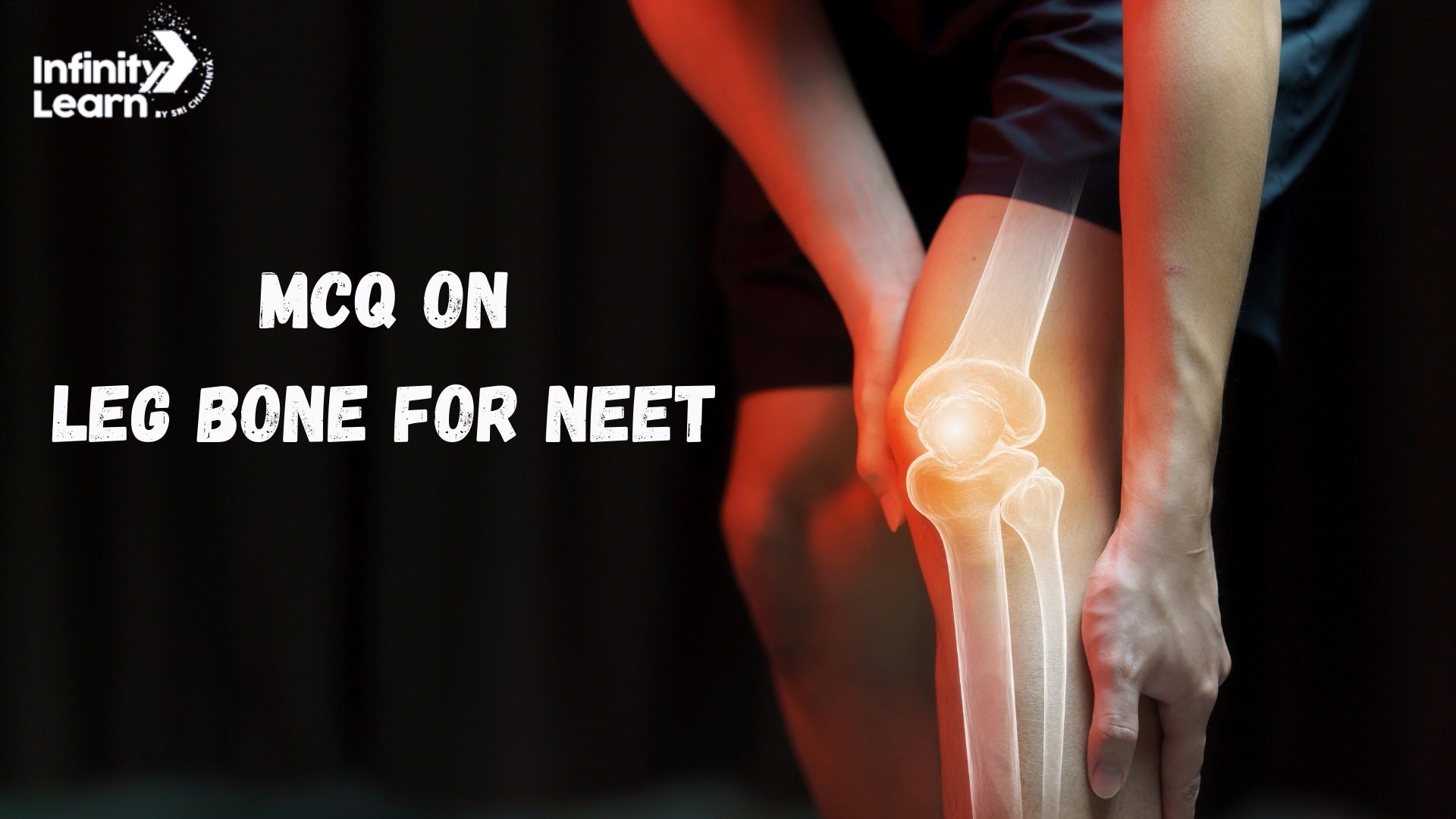The leg bone is a part of the lower limb between the knee and the foot. It consists of two bones, the tibia, and the fibula. The tibia is the larger bone and is located below the knee cap. The fibula is the smaller bone and is located below the patella. The leg bones provide stability and support to the body and help in mobility and ambulation in an upright position.

The tibia articulates with the femur at the knee joint, and the knee joint consists of three compartments. The ankle joint connects the lower leg to the foot and allows for movement.
Leg Bone MCQ for NEET
Ques 1. The intermediate cutaneous nerve of the thigh
1. emerges from the sacral plexus
2. projects independent of the medial cutaneous nerve of the thigh
3. pierces sartorius
4. expands beneath the knee
Answer: pierces sartorius
Ques 2. This is not an action of the gracilis
1. flexion of the knee
2. adduction of the thigh
3. medial rotation of the flexed knee
4. extension of the thigh
Answer: adduction of the thigh
Ques 3. The thinnest bone of the human body is
1. Incus
2. Stapes
3. Fibula
4. Malleus
Answer: Fibula
Ques 4. This is an incorrect statement regarding the innervation of the lower limb
1. deep peroneal nerve supplies extensor digitorum brevis
2. common peroneal nerve supplies no muscles in the leg
3. superficial peroneal nerve supplies skin between the first and second toes
4. deep peroneal nerve supplies peroneus tertius
Answer: superficial peroneal nerve supplies skin between the first and second toes
Ques 5. Concerning the knee joint movements
1. there is no active rotation of the extended knee
2. major role of the menisci is in extension/flexion of the knee
3. passive knee-extension will not result in “locking” of the joint
4. popliteus “unlocks” the extended knee by producing medial rotation of the femur
Answer: there is no active rotation of the extended knee
Ques 6. The anterior tibial artery
1. found lateral to the deep peroneal nerve
2. pierces interosseous membrane
3. supplies the lateral compartment of the leg
4. gives nutrient artery to the tibia
Answer: supplies the lateral compartment of the leg
Ques 7. This muscle provides the most control of the hip joint movement while sitting
1. gluteus medius
2. semimembranosus
3. gluteus maximus
4. iliacus
Answer: gluteus maximus
Ques 8. The tibial nerve
1. has one sensory and five motor branches in the popliteal fossa
2. when injury results in anaesthesia of the dorsum of the foot
3. found deep to flexor digitorum longus in the calf
4. found between the tendons of tibialis posterior and flexor digitorum longus passing behind the medial malleolus
Answer: has one sensory and five motor branches in the popliteal fossa
Ques 9. The largest bone in the human body is
1. Tibia
2. Spine
3. Femur
4. Skull
Answer: Femur
Ques 10. In the leg
1. the inferior tibiofibular joint is a synovial joint
2. deep fascia covers muscles only
3. the extensor compartment comprises 4 muscles, the anterior tibial vessels and the superficial peroneal nerve
4. two intermuscular septa attach to the tibia
Answer: deep fascia covers muscles only





